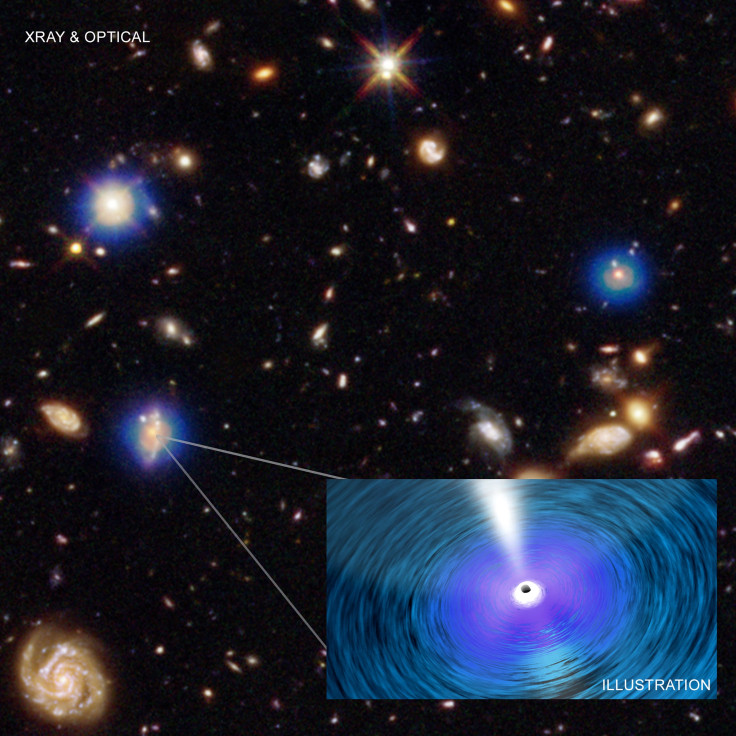Supermassive Black Holes Grow Faster In Larger Galaxies, Outpacing Star Formation

The relationship between black holes and stars is a complex one. Black holes are inevitably born from stars, but not all stars become black holes. And black holes, without a shred of sentimentality toward their former kin, would tear to shreds any star that made the mistake of venturing too close.
When it came to growth, it was thought that supermassive black holes that lie at the centers of most galaxies accumulated mass at roughly the same pace at which new stars were being born in those galaxies. But two new studies have shown that the largest supermassive black holes (with masses billions of times the sun) which reside in some of the most massive galaxies in the universe grow much faster than the rate at which those galaxies form new stars.
One of the studies focused on calculating the ratio between those two growth rates, which was thought to be roughly a constant for all galaxies, irrespective of their mass. The researchers took data from NASA's Chandra X-ray Observatory, the Hubble Space Telescope and other observatories, for galaxies located between 4.3 and 12.2 billion light-years away from Earth.
“We are trying to reconstruct a race that started billions of years ago. We are using extraordinary data taken from different telescopes to figure out how this cosmic competition unfolded,” Guang Yang of Penn State University, who led the study, said in a statement Thursday.
What Yang and his colleagues found was that supermassive black holes grew about 10 times faster in galaxies that were home to about 100 billion solar masses worth of stars, compared to galaxies that had stars with about 10 billion solar masses.
“An obvious question is why? Maybe massive galaxies are more effective at feeding cold gas to their central supermassive black holes than less massive ones,” coauthor Niel Brandt, also of Penn State, said in the statement.
The other study, led by Mar Mezcua of the Institut of Space Sciences in Spain, looked at 72 galaxies in the center of galaxy clusters located up to 3.5 billion light-years from Earth. Using X-ray data from Chandra, and radio data from the Australia Telescope Compact Array, the Karl G. Jansky Very Large Array and Very Long Baseline Array, the researchers found black holes grew much faster than the galaxies themselves.
“We found black holes that are far bigger than we expected. Maybe they got a head start in this race to grow, or maybe they’ve had an edge in speed of growth that’s lasted billions of years,” Mezcua said in the statement.
This finding also had implications for how massive these black holes were thought to be. If they had grown in tandem with the galaxies, their mass would have been about a tenth of what the researchers actually found. They estimated the mass of the black holes using the relationship between a black hole’s mass and its X-ray and radio emissions. About half the black holes in their sample had masses of over 10 billion suns each, putting them in a category of extreme weight, sometimes called “ultramassive.”
“We know that black holes are extreme objects, so it may not come as a surprise that the most extreme examples of them would break the rules we thought they should follow,” study coauthor J. Hlavacek-Larrondo of the University of Montreal, said.
The two studies are both appearing in the journal Monthly Notices of the Royal Astronomical Society. The paper by Mezcua and her colleagues is titled “The most massive black holes on the Fundamental Plane of Black Hole Accretion,” while the paper by Yang and his team of researchers is called “Linking black-hole growth with host galaxies: The accretion-stellar mass relation and its cosmic evolution.”
© Copyright IBTimes 2024. All rights reserved.




















